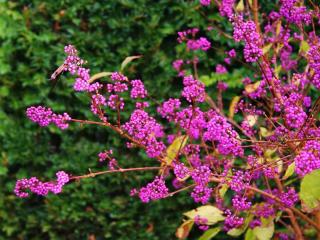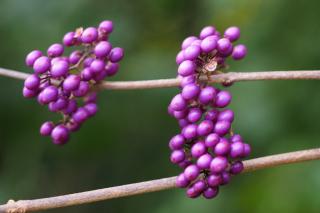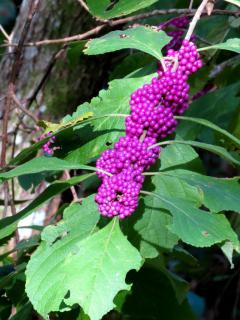

Callicarpa or candy tree is a beautiful shrub that grows fine in the ground and in a pot.
Callicarpa Candy tree facts
Name: Callicarpa bodinieri
Family: Lamiaceae (old: Verbenaceae)
Type: shrub
Height: 6 ½ feet (2 meters)
Exposure: full sun, light shade
Soil: ordinary – Foliage: deciduous – Flowering: early summer
Easy to care for, it will fill you with childish glee thanks to its cute berries that appear in the middle of summer and last until the end of winter.

Take note, however, of the following:
Follow our advice on planting shrubs.
It isn’t really a requirement to prune, but maintenance pruning helps keep a compact bearing.
 Wait for the end of winter to reduce or balance out the branches.
Wait for the end of winter to reduce or balance out the branches.
Even if the leaves fall off come autumn, the berries remain and thus decorate the garden or terrace over the coldest months of the year. Callicarpa berries are edible, even though they don’t taste very good. This means the shrub isn’t dangerous for toddlers to play around of.
Very much suited to growing in pots, it also can stand alone in a yard, or be part of a shrub bed.
If your area hosts particularly strong freezing in winter, grow it potted and bring it indoors to shelter it from freezing in a cool spot.